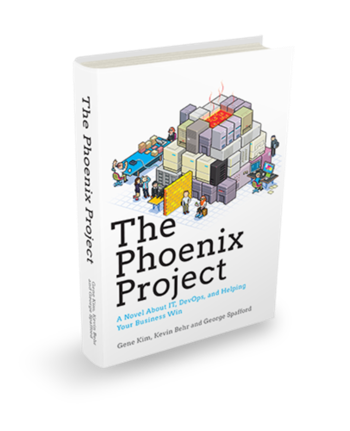[Updated January 15, 2013 to include link to longer excerpt - 170 pages, using the link at the end of this post.]
Last week, I read the newly released book, "The Phoenix Project: A Novel About IT, DevOps, and Helping Your Business Win." This book was written by Gene Kim, Kevin Behr, and George Spafford, who also wrote "The Visible Ops Handbook" (I was a contributing researcher on that project).
The Phoenix Project is a business novel that takes you through a few months in the life of Bill Palmer, an IT manager at a large auto parts manufacturing company. The book begins with Bill's boss (head of IT Ops) and his boss's boss (the CIO) getting fired. Bill gets a battlefield promotion and works directly with the CEO, who expects him to solve some serious IT problems (that threaten to destroy the business) in 90 days.
"The Goal" for Information Technology
Don't let the fact that this is a novel fool you - this is not fluff, and there is plenty of rich learning in this book. If you've ever read "The Goal," by Dr. Eliyahu Goldrattl, you'll know that it was a business novel designed to make it easier to understand his "Theory of Constraints" (TOC) model and it succeeded in making a lot of very complex concepts approachable for business seeking to improve the performance of their manufacturing and supply chain operations.
The Phoenix Project is a lot like The Goal, in that it wraps a compelling story around such complex topics of DevOps, ITIL, Agile development processes, risk management, top-down risk-based audit scoping, and a lot more.
A captivating read, with realistic scenarios
As the story unfolds, you not only learn about these topics, you also see them in situations that you'll recognize. I ran across quite a few scenarios that felt familiar both from my day job, as well as the work I do with enterprises and executives around the world. In other words, the situations in the book are very real business scenarios.
The characters remind me of people I know, as well. I had mental images of the characters as people I've worked with and you probably will, too. After all, the stereotypical IT security curmudgeon is not just a story - and you may be surprised what happens to the head of Information Security in this book.
I read this book on the plane the other day and found myself irritated when I had to shut down my e-reader for landing because I couldn't wait to see what happened next! I can almost see this becoming a movie at some point (though the idea of an IT-oriented feature film is probably a bit of a stretch - maybe there could be a car chase or an alien invasion or something).
Learn to improve your business
As entertaining as this book is, there is a lot to be learned from it. In today's business world, IT is involved in almost everything we do. One of the challenges faced by many IT professionals is that the non-technical parts of the business often don't understand the linkages between IT activities and business success. The result is IT getting the short end of the stick and starving for resources.
IT contributes to these problems, as well, because they spend a lot of time on activities that aren't "make or break" for the business so they have a hard time demonstrating value created with the budget they've been given.
The Phoenix Project hits this problem straight on and presents ways to get everyone on the same page about what's really important to the business, provides tools for IT professionals to focus on delivering meaningful results for the business, and tying all of it directly to how the business makes money by satisfying customer needs.
A must-read for IT professionals and business people alike
The principles shared in this book are critical for any business that relies on IT for its livelihood. I recommend The Phoenix Project to every business person and IT professional that wants to increase their business performance.
If you want to see what it's like, click this link to read a brief excerpt from The Phoenix Project.


 If you want to pick up $500 fast, just impress Lisa Haneberg with your artistic skillz. She's got a Web 1.0 thing going on with the current cover of her book
If you want to pick up $500 fast, just impress Lisa Haneberg with your artistic skillz. She's got a Web 1.0 thing going on with the current cover of her book  The subtitle of the book is "Break Free of the Behaviors That Hold You Back," and it very well could help you with that. One of the first things that really sucked me in was the book's focus on trying to help you identify and remove "Personal Constraints" that prevent you from achieving maximum success. Flippen actually refers to
The subtitle of the book is "Break Free of the Behaviors That Hold You Back," and it very well could help you with that. One of the first things that really sucked me in was the book's focus on trying to help you identify and remove "Personal Constraints" that prevent you from achieving maximum success. Flippen actually refers to 